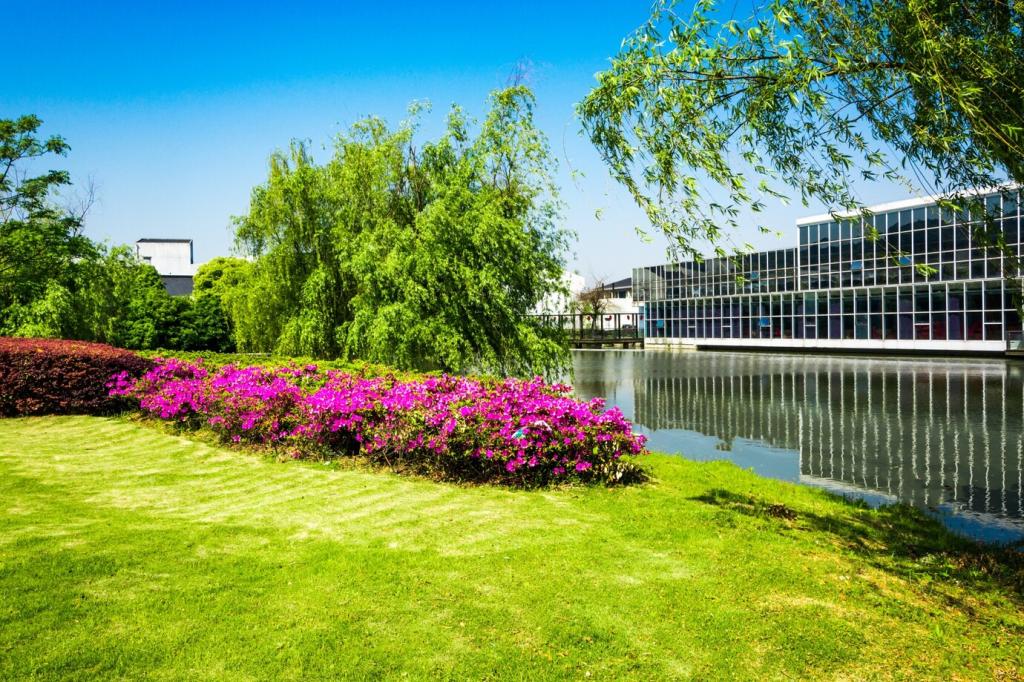Urban Green Spaces: Design and Development Trends
Urban green spaces are becoming increasingly vital in modern cities, shaping the way people interact with their environments and how urban life is experienced. As cities grow denser and more complex, these areas offer a respite from the built environment, fostering wellbeing, environmental sustainability, and social cohesion. Recent trends highlight innovative approaches in the design, development, and maintenance of parks, green corridors, and public gardens, reflecting a shift toward integrating nature into the urban fabric. This page explores the emerging ideas and best practices influencing urban green space planning, alongside the challenges and opportunities faced by city planners, designers, and communities.
Integrative Planning for Urban Green Spaces
Community-Centered Approaches
Community-centered approaches have transformed urban green space planning, moving beyond top-down models. Residents are increasingly invited to co-design parks and gardens, influencing everything from recreational features to plant selection. This participatory process not only results in spaces that reflect local preferences, but also fosters a stronger sense of ownership and belonging among users. Additionally, community stewardship programs have proven effective in maintaining and enhancing urban greenery, as they encourage resident involvement in daily upkeep and long-term improvement projects, making these spaces more resilient to neglect and underutilization.
Multifunctional Green Corridors
Multifunctional green corridors represent a forward-looking trend in urban landscape design. These interconnected stretches serve as ecological, social, and mobility arteries through cities, supporting biodiversity, recreation, and even active transportation. By linking parks, waterways, and urban forests, green corridors offer continuous access to nature while enabling safe routes for walkers and cyclists away from traffic. They also improve air quality and mitigate urban heat, blurring the boundaries between human activity and ecological processes. Cities adopting this concept report gains in both environmental health and the quality of urban life.
Integration with Urban Infrastructure
A growing emphasis is placed on harmonizing green spaces with existing and planned urban infrastructure. This integration sees parks and gardens woven into transportation corridors, stormwater management systems, and energy grids, making green spaces functional as well as decorative. For example, green roofs on transit stations, linear parks along railways, and permeable gardens adjacent to roadways exemplify this blending. The result is a series of multifunctional landscapes that support both the city’s operational needs and its aspirations for greater liveability and resilience.
Sustainable Design Innovations
Nature-Based Solutions
Nature-based solutions are increasingly used to address urban environmental challenges through green space design. Rain gardens, bioswales, and restored wetlands are integrated to manage stormwater and reduce flooding risk, while green roofs and living walls enhance insulation and biodiversity in the heart of cities. Projects that mimic natural ecosystems—such as native meadows or regenerative forests—contribute to carbon sequestration and habitat restoration. By aligning with ecological processes, cities can create spaces that are not only beautiful and engaging, but also robust tools for environmental management.
Climate-Adaptive Landscaping
Climate-adaptive landscaping involves selecting plants and design strategies that respond to shifting climate patterns. Designers now carefully consider native species, drought-tolerant vegetation, and low-maintenance ground covers, building resilience to increased heat, drought, and heavy rainfall. Green spaces are also designed to shade paved areas and lower urban heat islands, providing significant public health benefits. Adaptive irrigation systems and smart planting arrangements further enhance sustainability, ensuring that parks and gardens remain lush and vibrant amid changing environmental conditions, all while conserving resources.
Resource-Efficient Construction
Modern green space development increasingly employs resource-efficient construction methods and materials to minimize environmental impact. This includes using recycled or locally sourced materials for pathways, benches, and structures, as well as adopting construction techniques that preserve existing trees and soil health. The careful management of waste during construction and the use of modular, reusable features are also gaining traction. Such practices help reduce the overall carbon footprint of urban greening efforts, ensuring that the very process of creating green spaces aligns with the broader goals of sustainability and responsible urban development.

Smart Monitoring Systems
The adoption of smart monitoring systems offers cities unprecedented insight into the health and needs of their green spaces. Sensors embedded in soil, trees, and irrigation systems collect real-time data on moisture, nutrient levels, and air quality, alerting managers to emerging issues before they escalate. This approach not only helps optimize water usage and fertilizer application, but also allows for early detection of plant stress or pest outbreaks. Through remote monitoring and automation, cities can keep their green spaces healthy and vibrant with fewer resources and less manual intervention.
Digital Engagement Platforms
Digital platforms are making it easier for city residents to interact with and contribute to urban green spaces. Apps and interactive maps help users locate parks, report maintenance issues, or participate in citizen science initiatives that monitor local wildlife and plant health. Such tools can also foster community events, volunteering, and educational opportunities, strengthening the connection between people and their local environment. By democratizing information and encouraging feedback, digital engagement platforms ensure green spaces remain dynamic, relevant, and responsive to community needs.
Data-Driven Planning and Maintenance
Data-driven approaches underpin contemporary green space planning and maintenance, enabling evidence-based decisions that maximize ecological, social, and economic value. Geographic information systems (GIS) and predictive analytics help planners identify underserved areas, assess environmental impact, and forecast maintenance needs. Maintenance schedules are increasingly informed by real-time usage patterns and environmental data, letting cities deploy crews and resources more efficiently. This shift toward data-centric management ensures that urban green spaces evolve with the city and deliver optimal benefits with minimal waste.
Join our mailing list
